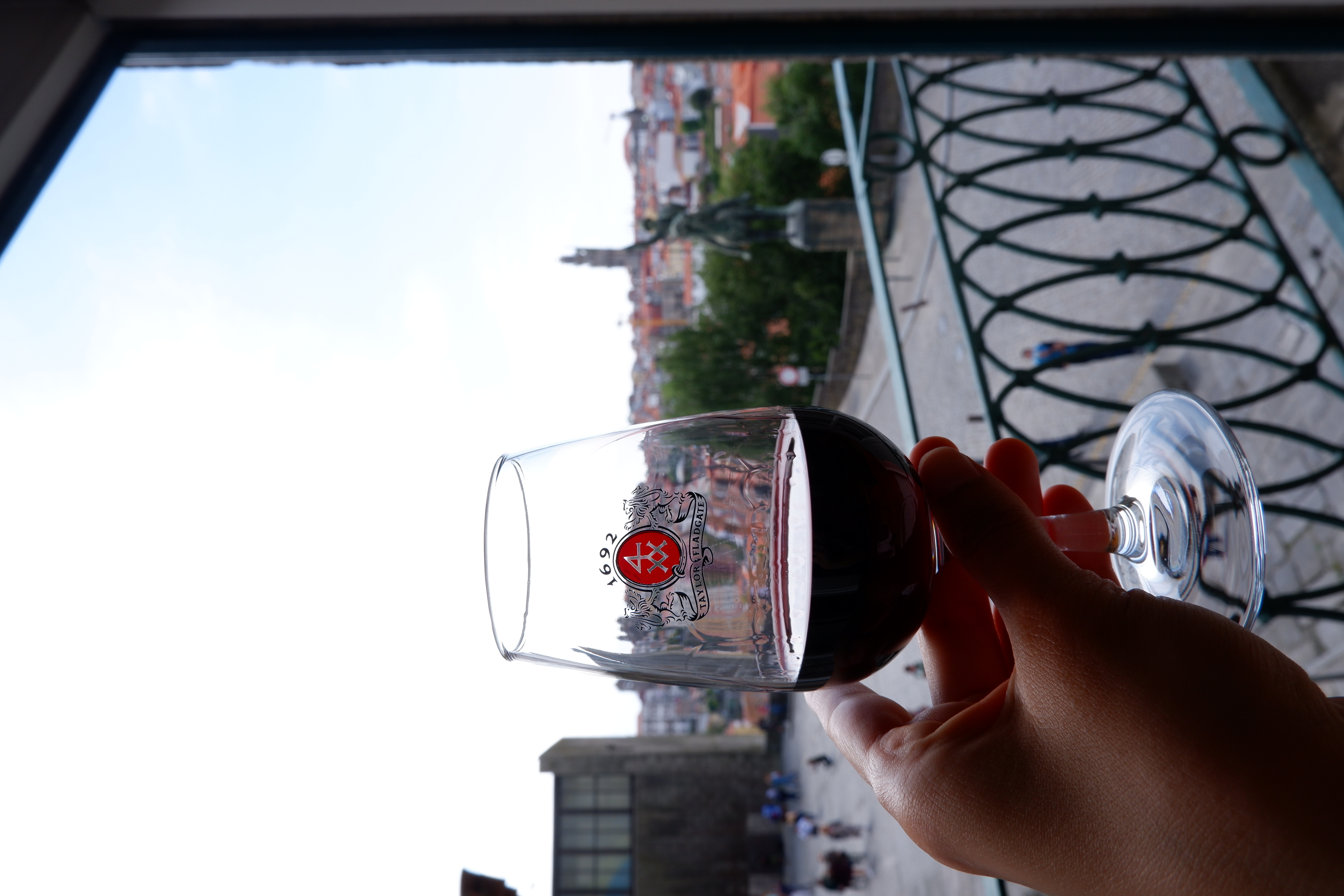Why Visit Now: Porto
Explore Porto's history, iconic Port wine cellars, vibrant food scene, and arts district. From Francesinha sandwiches to art exhibitions and architecture, riverside walks and unique shops, experience the perfect blend of tradition and modernity.
It’s hard not to feel entranced by Porto, with its tile-cladded buildings, romantic riverside promenade, and century-old wine cellars. Writers like J.K. Rowling have fallen for it, and so have older English generations who kept returning for its Port.
The industry is still going strong, but over the years, this northern Portuguese city has found other ways to attract visitors, whether that’s through its lively music scene, emerging art galleries, or innovative cuisine.
You can still get your francesinha, that meat-layered sandwich Porto is so famous for, but new chefs like David Jesus are shaking things up by throwing some vegetarian treats into the mix in his restaurants Seiva and Nem Carne Nem Peixe. The range of hotels is also reaching new standards, with exclusive five-star properties like Casa da Companhia, The Rebello, and the Condes de Azevedo Palace. And districts like Bonfim with its independent spirit are repeatedly showing up high on the ranks of the world’s coolest neighborhoods. If you’re heading to Porto soon, here are 10 things you shouldn’t miss on your next trip.
1. Enjoy a Port Wine Tasting

Joana Taborda
Even if you haven’t stepped foot in Porto yet, you have probably heard of its namesake wine, Vinho do Porto or Port wine.
Wine has been produced in this region for centuries, but the official Port wine label was first used in the 17th century. Much of it was exported to England, and even today many of the cellars are still run by English families. The city is located along the Douro Valley, Portugal’s oldest demarcated wine region, so there’s no better place for a wine tasting.
You’ll find most cellars across the river in Vila Nova de Gaia. The Cockburn’s and Graham’s are a great place to start. But you can also venture further into the region to visit the Croft vineyards, a company that has been in business since 1588. To honor its century-old wine tradition, Porto inaugurated WOW - World of Wine in 2020, a multipurpose space with six museums, including one dedicated to the different stages of winemaking. The visit ends with a tasting that includes not only Port but also other regional wines. And if you’re looking for a more casual atmosphere, there are plenty of wine bars where you can hunker down for the evening, like Prova or Capela Incomum. This last one also serves the Port-based cocktail, Porto Tónico.
2. Explore the Sardine Culture
Visit Portugal anytime around June, and you’ll likely smell the grilled sardines.
It’s one of the many signs of the country’s connection to the sea. Locals set up temporary grills on the streets during the summer as part of the Santos Populares festivities. In Porto, everyone gathers on the 23rd of June to celebrate São João with a big barbecue feast. While the best time to eat fresh sardines is in the summer, canned sardines can be found any time of year.

Conservas Pinhais
From careful selection to the final product: Workers sort fish at Conservas Pinhais, ensuring the quality that makes Portuguese canned seafood a global favorite. [Photo: Joana Taborda]

Sardine Tasting
Simple yet delightful: freshly baked bread paired with Conservas Pinhais sardines, a traditional Portuguese treat. [Photo: Joana Taborda]
The canning industry was introduced in Portugal in the 19th century, and at one point, it produced nearly 34 thousand tons of canned fish. There are fewer factories in operation today, most of which are located near Porto. Indeed, you can tour some of them, like the Conservas Pinhais & Cia, where you can witness the whole process, from fixing the sardines by hand to the packaging.
3. Walk Along the River and the Sea
The Douro River hugs the Ribeira, Porto’s picturesque waterfront district. But make your way north, and you’ll eventually end up in the sea.
You can walk all the way from the city to the coast in about an hour and a half.
Part of this stretch belongs to the Caminho Português da Costa, one of the many Portuguese coastal trails.
Foz do Douro is the first stop along the Atlantic, but if you want, you can continue a bit further to Matosinhos, a district famous for its fishing industry. Indeed, there are many seafood restaurants worth trying here, like O Lusitano or O Fernando. You can also pay a visit to the municipal market to see the fishmongers in action (especially if you go in the morning). Both of these places are also accessible by public transport if you don’t fancy the walk.
4. Hit Porto’s Unique Shops
Collecting pictures of Porto is a souvenir in itself, but if you want to pack in some local goods there are a handful of shops worth checking, starting with Claus Porto. This Portuguese brand has been producing artisanal soaps and fragrances since 1887.
Stay Inspired. Explore the World.
Subscribe to the Wayer Journal and discover a world of inspiring stories and Fernwayer's newest, meticulously crafted private tours.
Step into their shop at Rua das Flores to admire the colorful vintage-style packages and pick your favorite essence. Another mandatory stop is the Livraria Lello. With its iconic red velvet staircase and shelves stacked with books, this 20th-century bookstore looks straight out of Harry Potter. Be sure to book a ticket online to save time in the queue.
If you’re looking to stock up your pantry, you should visit A Pérola do Bolhão, a traditional grocery store where you can purchase anything from wine to charcuterie. Even if you don’t go inside, it’s worth coming here to capture its Art Nouveau tiled facade.
Artisanal chocolate is also a big thing in Porto, and you can get some at Chocolataria Equador, Bonitos Bombonaria, or Glad. This last one opened in 2023 and occasionally organizes chocolate-making workshops. For handmade crafts and clothing, check out Coração Alecrim.
5. Climb the Arch of One of the City’s Six Bridges
Six bridges connect Porto to the other side of the Douro River, where you’ll find Vila Nova de Gaia. The Ponte D.Luís is the most famous as it allows you to cross between both cities on foot. That, and the fact that it was designed by a student of Gustave Eiffel (yes, the one who built the Eiffel Tower). Others can be spotted on a walk around the city or, better yet, on a cruise along the Douro.
Since 2016, you can also climb one of them. The Arrábida Bridge was, at one point, the largest concrete arch in the world. Today, you can take on this arch yourself by joining the Porto Bridge Climb. A guide will take you up to the top, at 65 meters high, where you can enjoy a dramatic river view.
6. Visit a Renovated Food Market
Over the last decade, Portugal has made an effort to revive its traditional food markets. Lisbon has a fair share of them, and Porto is no different. Open since 1839, the Mercado do Bolhão has had many lives over the years, but the most recent one was in 2022 when the market was completely renovated.
The fruit and vegetable vendors are there, but now they’re joined by other folks selling handmade crafts, pastries, and grilled fish. Some stalls are still being claimed, meaning there will be more things to sample depending on what time you visit.
7. Tour Porto’s Art District
There’s no denying Porto’s artistic spirit. You’ll see in the numerous design shops, art galleries and street musicians that take over the streets at sunset. But there is one neighborhood that seems to encompasse all of that, and that is the Quarteirão Cultural Miguel Bombarda.
Over 100 creative establishments have taken over the streets in and around Rua de Miguel Bombarda. You’ll find contemporary art galleries like Ó! Galeria and Galeria Fernando Santos, but also coworking spaces like CRU and Circus Network, and cool coffeeshops like Hakko and Rosi.
8. Admire Cutting-Edge Exhibitions
It’s worth taking a trip outside the city center to visit the Fundação de Serralves. Founded in 1989, this is where you can catch the big art shows. Yayoi Kusama’s work, for example, is on display until September 2024.
Beyond the museum section, the foundation also features the Casa de Serralves (a well-preserved Art Déco house) and the Casa do Cinema Manoel de Oliveira (which honors the Portuguese director of the same name).
A tapestry of chaos and color: this bold tapestry at Serralves Museum challenges the senses with its intricate details and vibrant hues. It's a contemporary masterpiece, where each thread contributes to a larger, mesmerizing narrative. [Photo: Joana Taborda]
Even the surrounding 18-hectare park is dotted with contemporary art sculptures. The newest addition, however, is a three-floor building designed by the award-winning Portuguese architect Álvaro Siza Vieira, which is set to welcome a new set of exhibits, some of which will be dedicated to architecture.
9. Swim in One of the Prettiest Pools in Portugal
Born and raised in Matosinhos, Álvaro Siza Vieira is one of the most acclaimed Portuguese architects. He has buildings all over Portugal, but it’s in his hometown that you’ll find the biggest congregation of them.
Among his most iconic works is the Piscina das Marés, a seawater pool located in Leça da Palmeira, about 11km north of Porto. Inaugurated in 1966, the complex is seemingly integrated between the natural rocks. Vieira has expertly combined the organic features with the accent concrete walls that cast interesting shadows as the day goes by.
10. See an Immersive Multimedia Show in a Baroque Church
When Italian architect Nicolau Nasoni designed the Igreja dos Clérigos in the 18th century, little did he know how the space would change. The church is a prime example of the city’s Baroque architecture, with its ornate stone walls and marble altarpiece. You can still get a sense of that history when you visit today but head here in the evening, and you’ll experience a whole different site.
Captured in light and color: a spectacular visual symphony transforms the interior of a church into an immersive art experience, where each illumination tells a story of history, spirituality, and beauty. [Photos: Spiritus Porto]

1
Clérigos Church, a Baroque masterpiece in Porto since the 18th century, is reborn with the Spiritus show, where light and sound honor its historical grandeur.

2
The enduring stone of Clérigos Church meets ephemeral beauty as Spiritus casts a new spectrum of narratives on its ancient walls.

3
Spiritus interweaves Porto's Clérigos Church history with digital artistry, turning the space into a time-traveling experience.

4
In the Clérigos Church, Spiritus not only illuminates the architecture but also the stories and echoes of spiritual quests throughout its centuries-old existence.

5
Spiritus connects each visitor to the Clérigos Church’s past, enveloping them in a sensory blanket woven from Porto’s rich tapestry of culture and devotion.

6
Above, the Spiritus experience showers the Clérigos Church with a celestial symphony of lights, reflecting the heavenward gaze of its historic patrons.
The creative atelier OCUBO has given a new life to the church by welcoming a dynamic multimedia show inside. The Spiritus Porto, as it’s known, paints the walls and the ceiling of this iconic city monument with colorful light patterns and visual effects paired with music that offer visitors a trip for the senses. Every month there is also an immersive live concert. ||
